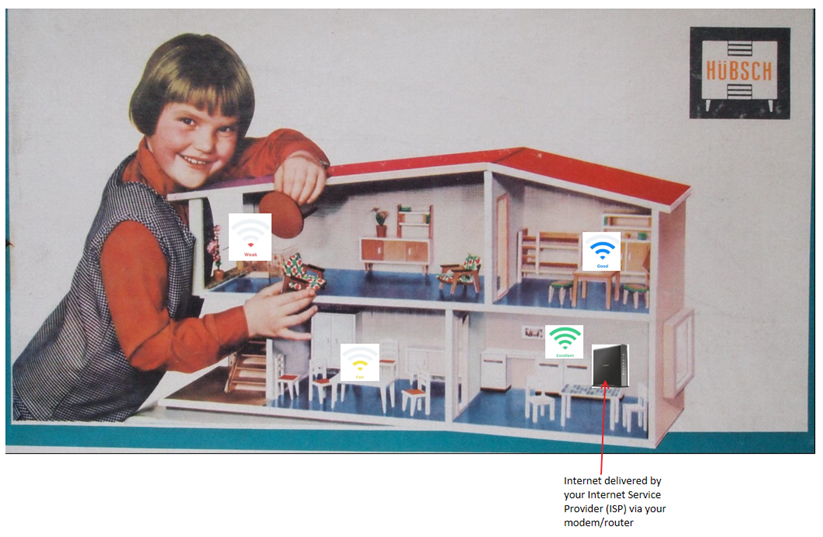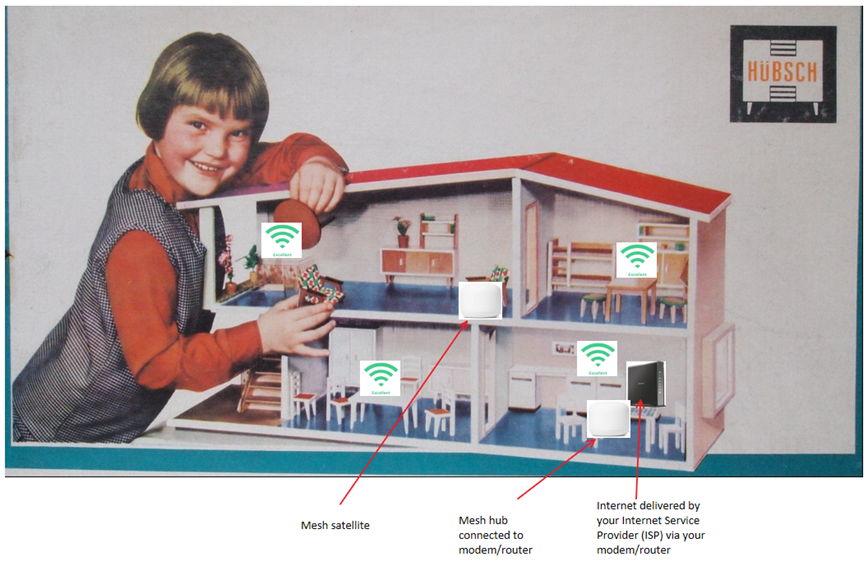Test and boost your home wifi
Let’s take a look at your home Internet setup. With many of us working at home and sharing our home wifi with kids, spouses, ex-spouses, extended family, and the mysterious person you suspect might be living in your basement, here are a few suggestions for evaluating and improving your speed on your home network.
Let’s get some data, first.
- Using your wifi-connected laptop, tablet, or phone, move close to your modem/router.* On your device, go to Speedtest.net, and click the Go button. Once speedtest is done running, you’ll have two numbers. The first will be your download speed—how quickly information moves from the Internet to your device. The second will be your upload speed—how quickly information moves from your device to the Internet. Your download speed may be significantly faster than your upload speed, and that’s okay.
- Next, check with your Internet Service Provider (ISP) to make sure that you’re getting the download/upload speed you’re paying for. If your speed is much lower, then work with your ISP to make sure you get the speed you should be getting. Sometimes the fix is easy. I once had a bad cable running from the wall to my modem that was cutting my Internet speed in half. I was paying for a download speed of 80 megabytes per second (Mbps), but getting only 40.
If your Internet speed is close to what you’re paying for, let’s check your home wifi coverage next. Once your modem brings the Internet into your home, your router spews the Internet out over wifi. The closer you are to the router, the stronger your wifi signal will be. (It’s 2020. The Internet is definitely being spewed all over my home. In other years, it has gently cascaded or quietly burbled. Not this year. It’s most assuredly spewing.)
-
On your phone download a wifi signal strength app (e.g., Wifi Signal Strength Meter for Android, Wi-Fi SweetSpots for iPhone). Using the app, wander through your home checking your wifi signal strength. The greater the distance from your router and the more walls between you and your router, the lower the wifi strength will be. The lower the wifi strength, the slower your Internet speed will be. In other words, if you are sitting on your bed and your wifi signal strength is 50%, your Internet speed will be a lot slower than if, say, you’re sitting on your couch where your signal strength is 85%.
Knowing where the stronger wifi spots are in your home can help you decide where you’re going to use your laptop for your Zoom sessions. This handy-dandy image shows a modem/router in the lower right corner of the house. The further away you are, the weaker your wifi signal will be.

Important notes
- The more devices that are connected to and using your wifi at one time, the slower your Internet speed will be. That 80 Mbps that I’m paying for is the top speed possible. In practical day-to-day use, I get somewhere between 73 and 78—depending on all kinds of factors, including what is being downloaded/uploaded at any given time on my computer, my phone, my tablet, my wife’s computer, her phone, her wifi-connected printer, our Roku, and our wifi-connected security camera.
Also…
-
Your router may use a 2.4 GHz radio frequency or a 5 GHz frequency. This CenturyLink page nicely describes the differences between them. (If you immediately thought the difference between 5 GHz and 2.4 GHz is 2.6 GHz, then you and I should be friends). It may make sense for you to switch from one frequency to the other. If your router is newer (last 5 years or so), you should be able to switch between 2.4 and 5. Your ISP can help you do that.
If you have weak wifi spots where you are doing most of your work, you may want to consider adding a mesh network. With a mesh network, you connect an additional router to your modem (sometimes called a mesh hub), and that hub connects via wifi to satellite routers you place around your home. As you move from room to room, your device connects to the satellite router that has the strongest wifi signal. The bigger your home, the more mesh satellites you may want to use.

********************************
*The modem is what brings the Internet into your home. The router is what creates the wifi signal that your devices use to access the Internet that the modem has brought in. It is very likely that you have one box that houses both your modem and your router. You’re looking for contraptions that look something like these.

